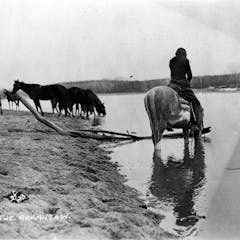
Articles on Oil
Displaying 1 - 20 of 333 articles

A spike in oil prices as a result of escalating Middle East tensions would not immediately affect Australia – but precautionary measures should be taken.

Carbon capture is turning the oil and gas industry into a critical player for mitigating climate change – while its products continue to heat up the planet.

The combination of the source of the CO₂ and its end use determines its environmental and economic benefits or consequences.

The deal is a global aspiration, not a legally binding agreement. But it should end the idea that burning carbon – in Australia and elsewhere – can continue on a significant scale beyond 2050.

Banning public funding for overseas fossil fuel projects will boost Australia’s climate leadership. But can it take the next step and do it domestically?

UAE will preside over talks to limit climate change – despite revelations it plans oil deals.

Electric vehicles get all the press – but it’s the smaller unsung two wheelers cutting oil demand the most.

An analysis of past UN conference presidencies suggests the 2023 summit’s agenda would do more to accelerate the transition away from fossil fuels.

Despite the perpetrators being tried and convicted, anti-Indigenous sentiment roiled the area for decades.

Decades of secrecy and industry influence in Alberta have created a crisis of liability in abandoned oil infrastructure which only a serious course correction can hope to fix.

An initial squeeze on demand for Russian oil due to western sanctions was temporary but the country’s oil industry might have bigger problems.

Russia’s 2022 invasion of Ukraine reprised the risks of energy weaponization, but the oil landscape today and energy security itself are changing.

Holding climate change to 1.5 might be possible – but in the best case, we’ll blow past the limit first and then backpedal.

In a greener future, what becomes of current fossil fuel workers? Despite possessing skills applicable to green industries, their geographical locations will limit their opportunities.

The decision of the people of Ecuador to halt oil extraction in the Yasuní is a trend-setting precedent of global importance and a victory that Canadians should build upon.

Despite the meteoric rise of wind and solar, fossil energy sources have met most new demand in fast-growing economies.

The International Energy Agency moved up the date when it expects oil demand to peak to before 2030. Electric vehicle growth is a big part of the reason.

Pouring these products down the sink causes society-wide problems for the entire sewerage system and the workers who maintain it.

China’s partnership with Russia has been unbalanced in recent years, as Beijing grew more powerful.

Over a decade of protest led to the banning of fuel exploration in New Zealand waters. As this extract from a new book explains, that ‘win’ is still precarious and may depend on the election result.
